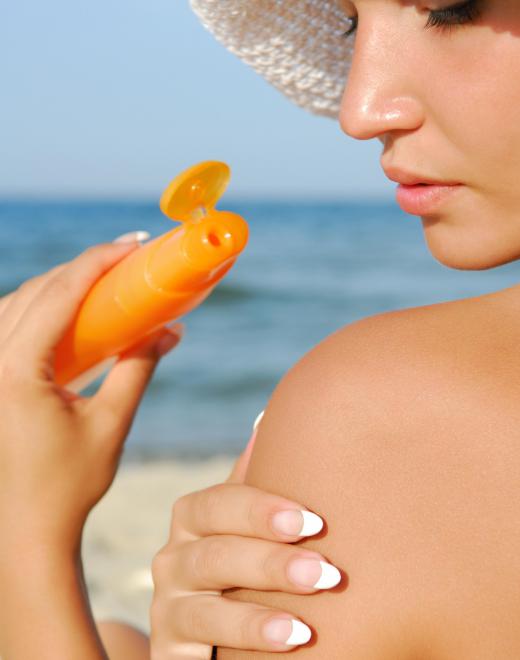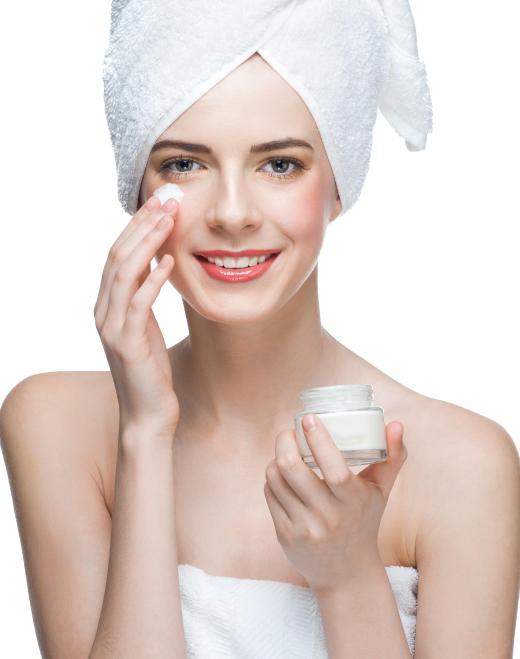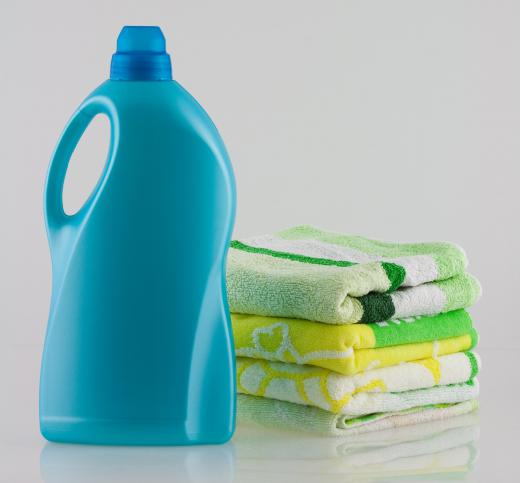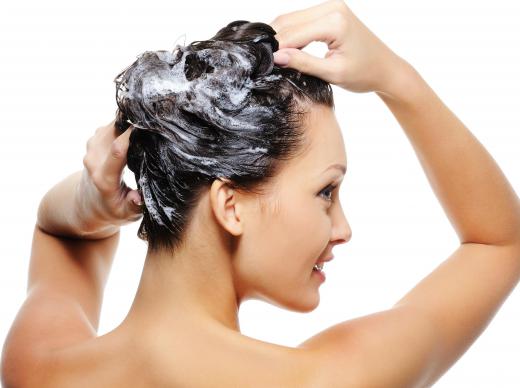What is Phenoxyethanol?
Phenoxyethanol is a chemical compound with a molecular composition that includes carbon, making it organic. It is used in organic chemistry as a glycol ether that acts as a solvent. This means that the compound can be used to dissolve solids, liquids or gas to make a homogeneous mixture or solution.
The atomic makeup of this compound contains eight carbon, ten hydrogen and two oxygen atoms. As an alkyl ether, its carbon and hydrogen atoms are arranged into a chain and connected to the oxygen. It is also a ethylene glycol and contains two hydrogen and oxygen groups. Due to the chemical makeup, the compound has a fairly high boiling point of 476°F (about 247°C).

Phenoxyethanol looks clear and has the texture of an oily liquid. Physically, it is highly stable unless it's introduced to acid chlorides, acid anhydrides or very strong oxidizing agents. When exposed to these materials, it will experience combustion. The molecule is also harmful if inhaled, swallowed or comes in contact with the skin. It can also cause serious damage to the eyes.

The molecule is most commonly used in the field of medicine known as dermatology. It has properties that make it useful for skin protection as well as providing healing factors. The most common dermatological products that feature the compound are sunscreen lotion and skin creams.
It is also commonly used in bactericides, solutions that are used to kill bacteria without harming other substances. When combined into this form, it is known as a quaternary ammonium compound, a negatively-charged anion. Common examples of these are disinfectants, fabric softeners, shampoo and spermicidal jellies.

In the field of perfumery, phenoxyethanol is used as a stabilizing agent. This is called a fixative in the industry and allows the final product to keep its fragrance longer. The molecule basically reduces the evaporation rate of the perfume, making it indispensable to the industry.
It is also heavily used by a variety of other industries. The compound is found in antiseptics, insect repellents, resins, dyes, inks and a variety of pharmaceuticals. It can be used as a preservative to retain the freshness of some foods. In addition, since it's soluble in water, it can be used as an anesthetic for fish.

One of the most important aspects of its use is as a biological buffer instead of sodium azide. Phenoxyethanol is less toxic and also does not react to either copper or lead. This allows it to be made into an aqueous solution. When this solution is introduced to a second solution, the pH measurement is changed very little, which helps protect the overall acid or base level of the second solution.
AS FEATURED ON:
AS FEATURED ON:

















Discussion Comments
Is this product present in genital warts chemicals? I'm on Wartscide right now and so far everything is going smoothly. In fact, it has already blackened. I read that it usually falls off on the second day. Great article!
post number 5: Check the other ingredients, it's most unlikely that irritation is caused by this.
post number 4: Sodium laurel sulphate is used in many soaps, shampoos etc. it is not a soap but a detergent and is a known skin irritant.
phosphoric acid: methylparaben is a preservative widely used in many cosmetics and skincare preparations. It too, has been given a bad press in recent years as it was linked (albeit weakly) to cancer as it was found in breast cancer tissue. It's supposedly safe but to be honest, I'd use phenoxyethanol over the parabens any day.
I have been plagued with a horrific rash on and off for the last two years. Finally a DNA test done in England submitted by my naturopath reported very high levels of Phenoxyethanol attached to my DNA.
I have since stopped using he shampoo Nioxin which lists this ingredient. So far, no rash now for five months. Taking chelation supplements to remove toxin from body. My experience has made me very wary of chemical compounds in cosmetics and skin care products.
i purchased a genital wart removal cream containing
this compound. product name "somoxal" ingredients:
birch oil,h2o2,ozone,cetearyl alcohol,sodium laurel
sulphate,phosphoric acid methylparaben.
Does anyone know, or can comment on this formulation? It's not working for me. Company name: "waldon research." any fda types or md's please comment. very appreciative.
I have recently used some skin care that had phenoxythanol in it. My skin never improved it got dry dry and agitated. So is it harmful or not as I get mixed feed back to this question. Thank you.
I would like to know about the reactivity of phenoxyethanol with ethylenediamine tetra acetic acid.
I'm very pleased with the information i got from this site!
I would like to know if phenoxyethanol being so efficient, can replace formalin and others compounds of the formaldehyde.
In this case i use a hair product that has in its composition phenoxyethanol instead formalin, but there's people that don't believe that a chemical the hair product used to straighten hair has to contain a formaldehyde substance in it. Please make this subject more clear for me, so i can explain better to my clients.
Thank you very much. Kind regards.
Post your comments